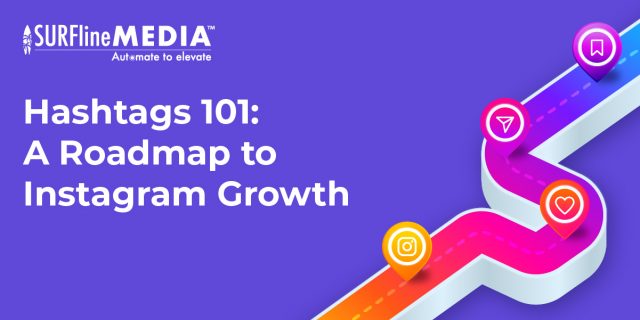Mobile marketing has emerged as a driving force that shapes consumer behavior, transforms business strategies, and revolutionizes industries across the globe. With the ability to connect, engage, and influence audiences on a personal level, mobile marketing has opened up a world of opportunities for businesses to interact with their customers in innovative and impactful ways.
In this article, we’ll explore 6 successful examples of mobile marketing, with the strategies and trends that define this field. We will shed light on how businesses are effectively harnessing the power of mobile to capture attention, build loyalty, and thrive in the digital age.
1. Amazon Go: Mobile Marketing in Seamless E-commerce Experience
Amazon Go, one of the prime examples of Mobile Marketing, has redefined the shopping experience with its revolutionary cashier-less concept. Leveraging advanced mobile technology, Amazon Go has eliminated the need for traditional checkout lines, transforming the way customers shop.
At the heart of Amazon Go’s concept is its seamless integration of mobile technology. Shoppers are required to download the Amazon Go app and link it to their Amazon account.
Armed with this app, customers can enter the store, pick up the items they want, and simply walk out – no need to scan items or go through a checkout process. The app’s advanced combination of computer vision, sensors, and AI technology automatically tracks the items customers select and charges their Amazon accounts accordingly.
Amazon Go made Revolutionary cashier-less shopping experience redefining retail (source: PhoneArena)
This mobile-driven approach offers a frictionless shopping experience that aligns perfectly with today’s fast-paced lifestyle. The convenience is undeniable: customers can grab what they need and leave the store without any time-consuming interactions. This level of ease not only saves time but also enhances customer satisfaction, as shoppers feel valued and empowered by the technology.
For businesses aspiring to enhance customer engagement through mobile apps, Amazon Go’s success offers key takeaways. First, prioritize convenience and efficiency – customers crave simplicity in their interactions. Second, invest in advanced technologies like AI and computer vision to create unique and innovative experiences. Third, foster a seamless integration between the physical and digital aspects of your business, delivering a holistic journey to your customers.
Read more: 5 Powerful AI Tools for Designers in 2023
2. Airbnb: Examples of Mobile Marketing with Personalization
As one of the excellent examples of Mobile Marketing, the Airbnb mobile app is more than just a booking platform; it’s a personalized travel companion. Upon logging in, users are greeted with tailored recommendations based on their previous searches and preferences. This level of customization not only simplifies the search process but also enhances user engagement by providing options that align with their interests.
The user-centric design of the app ensures a seamless and intuitive experience. From exploring diverse lodging options to reading detailed reviews, the app keeps travelers informed and empowered to make informed decisions. The incorporation of high-quality visuals and interactive elements makes the app engaging and visually appealing, further enhancing its user-friendliness.
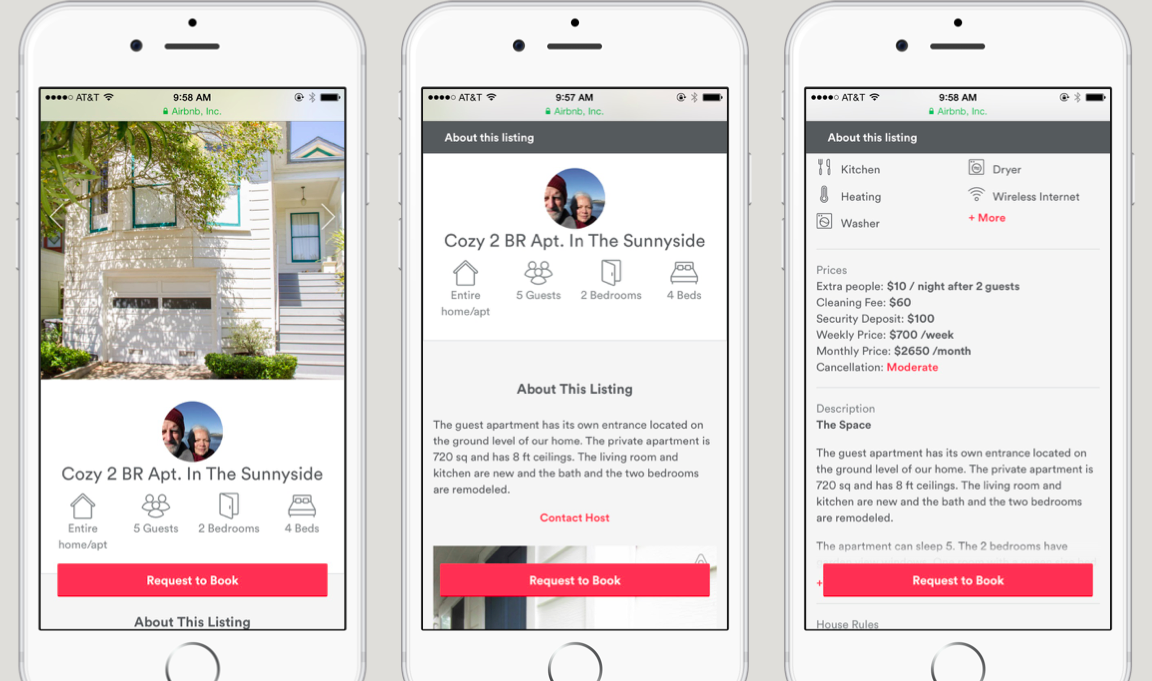
Airbnb transformed travel with peer-to-peer lodging connections (source: TechCrunch)
One of Airbnb‘s greatest achievements through its mobile app is simplifying the entire travel journey. Users can effortlessly browse listings, make bookings, and communicate with hosts, all within the same platform. This streamlined process minimizes the friction associated with traditional travel planning, leading to increased customer satisfaction.
The success of Airbnb’s mobile marketing approach demonstrates the potential of leveraging mobile platforms to offer tailored services. By studying user behavior, preferences, and trends, businesses can craft personalized experiences that resonate with their audience. This extends beyond accommodation – industries across the board can tap into the power of customization to enhance their customer interactions.
3. Pokémon GO: Examples of Mobile Marketing with Augmented Reality
Pokémon GO stands as a monumental example of how mobile marketing can create a cultural phenomenon and reshape the gaming landscape. Launched in 2016, the game’s integration of augmented reality (AR) technology into mobile gaming has forever altered the way players interact with both digital and physical worlds.
The Pokémon GO phenomenon introduced the world to the potential of augmented reality. By superimposing virtual creatures into real-world settings through users’ smartphone cameras, the game brought cherished Pokémon characters to life in the streets, parks, and landmarks of cities worldwide. This revolutionary use of AR not only captivated players but also introduced an entirely new way of experiencing gaming.
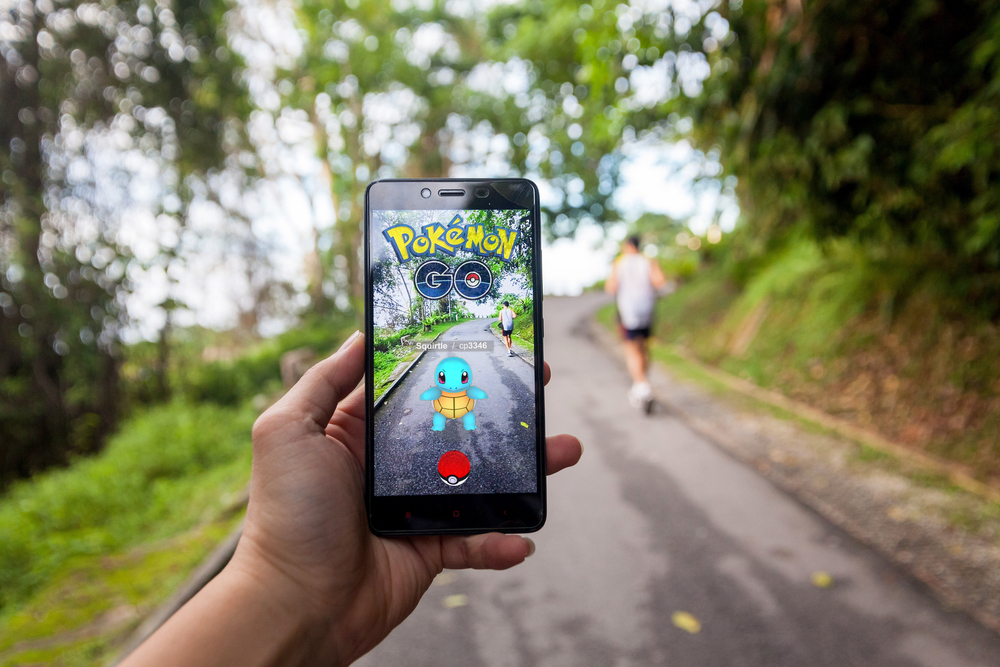
Pokémon GO created an augmented reality game merging Pokémon and reality (source: CEVA DSP)
The game’s gamification of physical spaces transformed neighborhoods and public areas into bustling hunting grounds. Players were motivated to explore their surroundings, fostering community engagement and physical activity. Additionally, the introduction of real-time player interaction, such as raid battles and gym challenges, encouraged collaboration and social interaction among players.
The success of Pokémon GO holds invaluable lessons for businesses aiming to enhance user engagement through innovative mobile experiences. The game’s ability to seamlessly blend digital content with the real world highlights the potential of AR and location-based technologies. By creating experiences that encourage exploration and social interaction, businesses can captivate audiences and foster deeper connections with their brand.
4. Domino’s Pizza: Mobile Marketing in Food Delivery
Domino’s Pizza has emerged as one of the prime examples of Mobile Marketing that can transform the customer experience and revolutionize an industry. With its intuitive mobile app, Domino’s has elevated the art of pizza delivery by embracing technology to enhance convenience, speed, and customer engagement.
The Domino’s mobile app streamlines the pizza ordering process, making it incredibly easy for customers to customize and place their orders. Users can build their own pizzas, select toppings, and even track the progress of their order in real time. This user-friendly interface caters to the on-the-go lifestyle of modern consumers, offering a frictionless way to satisfy their cravings.

Domino’s Pizza made an app-powered ordering revolutionizing pizza delivery convenience. (Source: Future Platforms)
One of the standout features of the app is its emphasis on real-time updates and communication. From the moment an order is placed to its delivery, customers receive notifications about its status. This level of transparency not only builds trust but also keeps customers engaged and excited about their purchase.
Domino’s also understands the power of gamification in mobile marketing. The app’s loyalty program rewards customers with points for each order, encouraging repeat business and driving customer retention. Push notifications about exclusive deals and promotions further boost engagement and encourage users to return for more.
The success of Domino’s mobile marketing strategy highlights the importance of embracing technology to enhance customer engagement and convenience. By offering a seamless and interactive ordering process, real-time communication, and incentivized loyalty programs, businesses can create meaningful connections with their customers and cultivate a loyal user base.
Read more: Brand Storytelling: How to Connect with Your Audience on a Deeper Level
5. Nike Training Club: Examples of Mobile Marketing in Fitness
The Nike Training Club (NTC) app stands as one of the best examples of Mobile Marketing‘s potential to transform the health and fitness industry. With its comprehensive workout features, personalized plans, and social community-building aspects, NTC exemplifies how mobile technology can inspire and motivate users to lead healthier lives.
The NTC app is a treasure trove of workout possibilities. It offers a diverse range of fitness routines, from strength training to yoga, accommodating various fitness levels and goals. Users can select workouts tailored to their preferences and create a personalized fitness regimen that suits their unique journey.
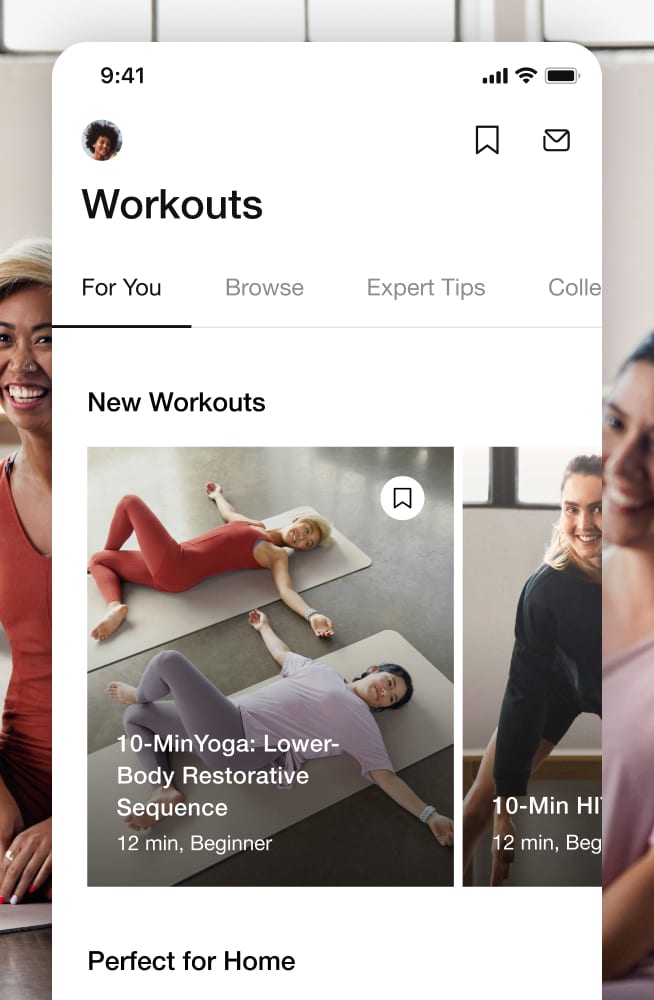
Nike Training Club offers personalized fitness app empowering workouts and wellness journeys (Source: Nike)
The app’s emphasis on personalization extends to fitness plans that adapt to individual progress. Users can track their workouts, monitor achievements, and set goals for themselves. This real-time progress tracking not only boosts motivation but also enables users to witness their own growth, creating a sense of accomplishment that encourages continued engagement.
NTC’s genius lies in its community-building features. Users can share their workouts, achievements, and personal milestones on social media, fostering a sense of camaraderie and accountability. The app also introduces challenges that encourage friendly competition and collaboration among users, further solidifying the app’s role as a hub for fitness enthusiasts.
For businesses aspiring to promote health and well-being through mobile engagement, NTC offers valuable insights. The app’s approach demonstrates the importance of customization, interactive progress tracking, and community-building. By creating personalized experiences, empowering users to track their journey, and fostering a supportive community, businesses can create mobile platforms that truly inspire positive lifestyle changes.
6. PayPal: Mobile Marketing in Finance and Payment
PayPal’s mobile app serves as one of the best examples of Mobile Marketing and its transformative potential, particularly in the realm of secure digital transactions. The app’s multifaceted approach, featuring one-touch payments, QR codes, and contactless technology, has not only streamlined the payment process but also fortified customer trust in mobile payments.
The one-touch payment feature is a hallmark of convenience, allowing users to complete transactions with a single tap. This frictionless experience enhances user satisfaction and encourages repeat usage. Additionally, the integration of QR codes and contactless technology has bridged the gap between online and offline transactions. By enabling users to make in-person payments through their mobile devices, PayPal has expanded its utility and relevance in various contexts.
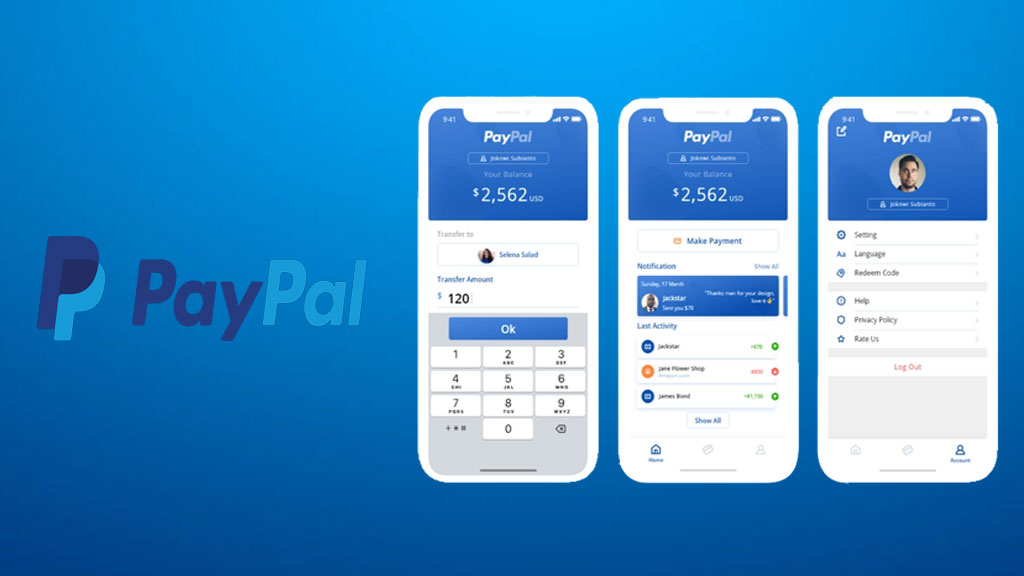
PayPal offer streamlined digital payments simplifying online transactions and e-commerce (source: Apptunix)
One of the most significant contributions of PayPal’s mobile app is its unwavering focus on customer trust and data security. With the proliferation of digital transactions, security concerns are paramount. PayPal’s robust security measures, including biometric authentication and fraud protection, have cultivated a sense of safety and reliability among users. This trust-building effort has played a pivotal role in driving the widespread adoption of the app.
For businesses seeking to implement similar trust-building features in their financial apps, PayPal’s strategy offers valuable insights. First and foremost, a transparent commitment to user data security is essential. Second, the integration of user-friendly features like biometric authentication can enhance both convenience and trust. Lastly, clear communication about the app’s security measures and data handling practices can further reinforce trust among users.
Conclusion
The diverse examples of mobile marketing we’ve explored, from Amazon Go’s cashier-less convenience to Nike Training Club’s fitness empowerment, underscore the limitless potential of mobile technology in reshaping industries and enhancing customer experiences.
Amid this digital transformation, Surfline Media stands out as one of the leading agencies in mobile marketing services, specializing in CRM automation. Our dedication to helping businesses forge stronger connections, streamline operations, and achieve efficiency through tailored solutions is unwavering. Contact us today!



